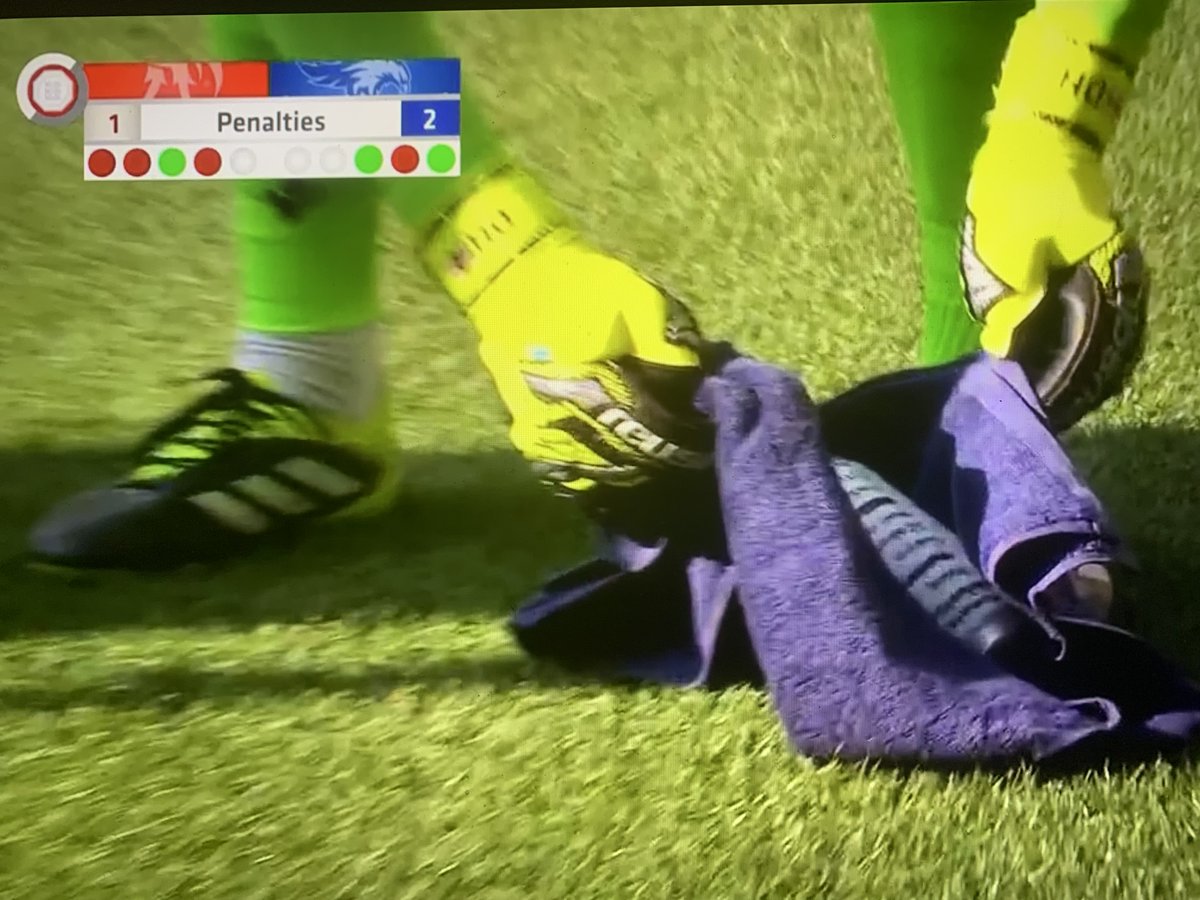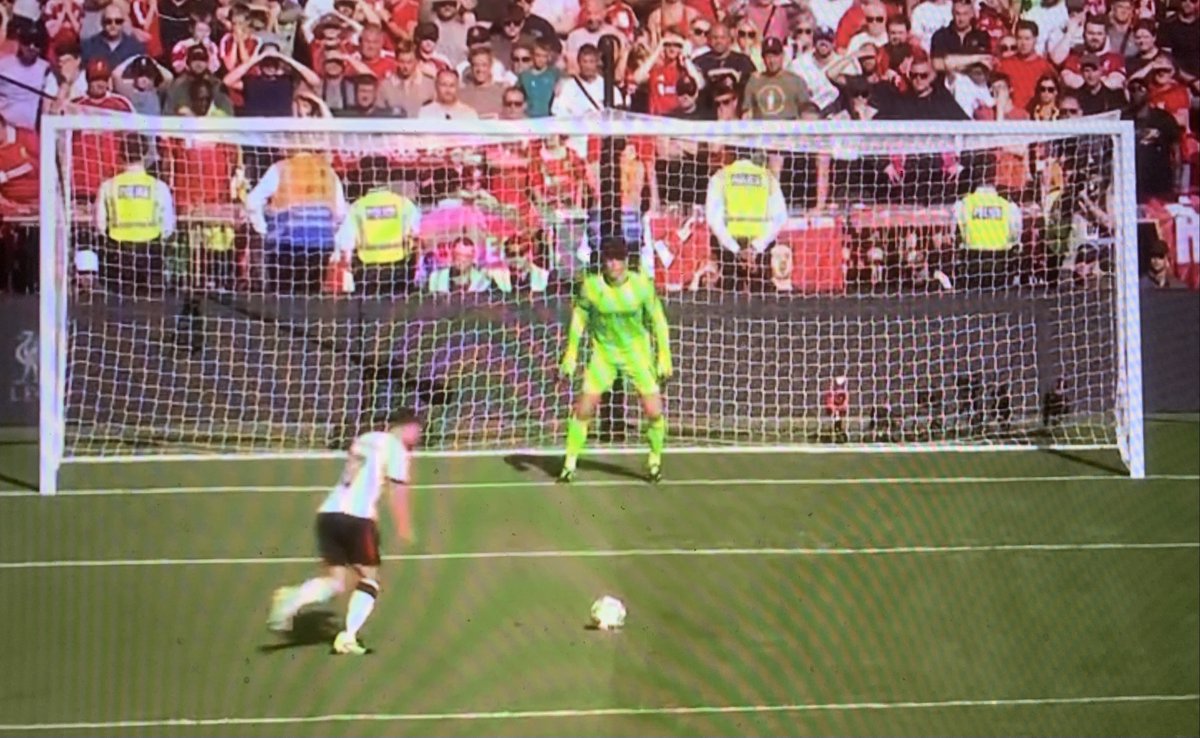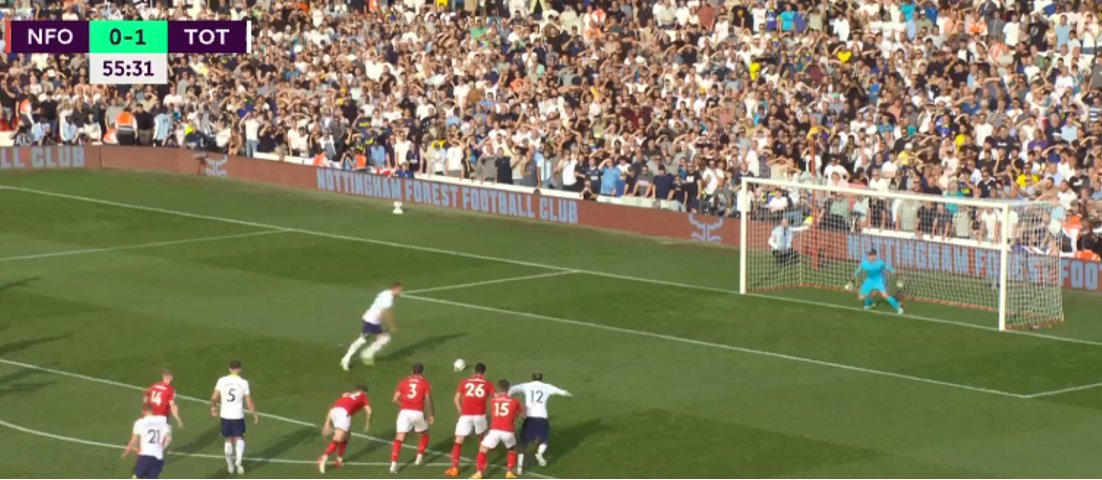The penalty shootout in football is the essence of performing under pressure. I spent 5 years of my life studying the Psychology of this event. Here's what I learned, which can also help understanding it in the current Euros/Copa America. Thread based on 10 of our studies. (1/13) 

We analyzed videos of EVERY SINGLE SHOOTOUT in the World Cup, Euro, and Champions League from 1976 to today, interviewed 25 players who were there, and personally tested predictions in practice with 15 elite teams. The unsurprising conclusion: This is a psychological game! (2/13) 
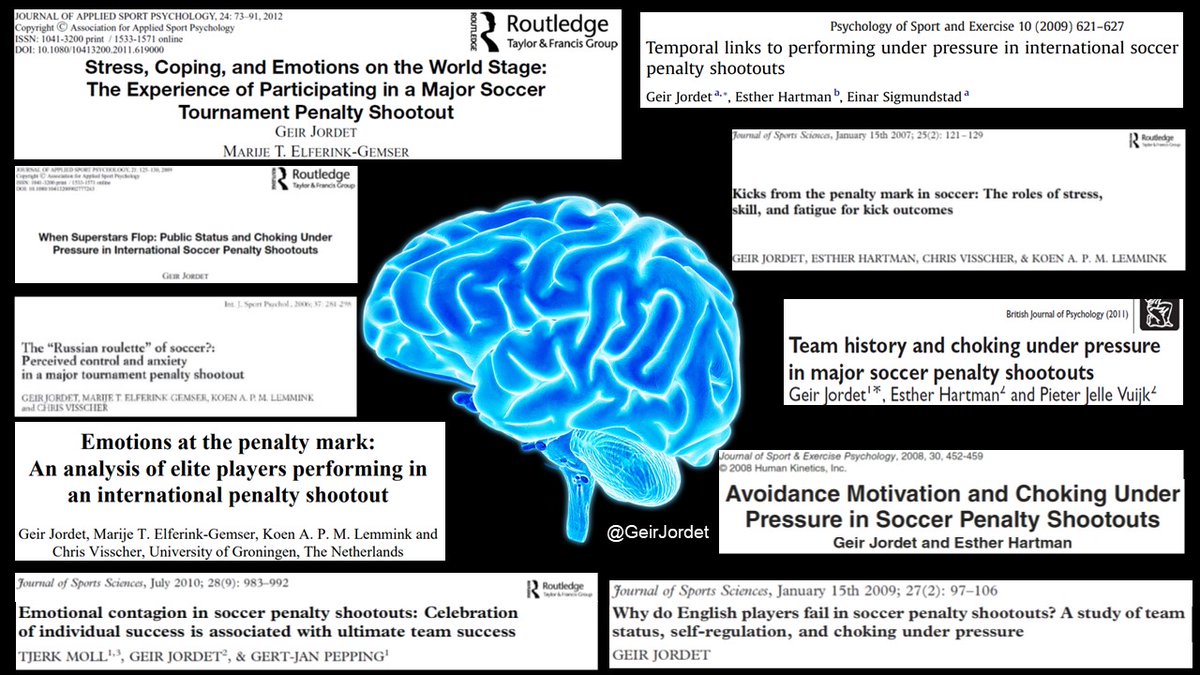
Players in the World Cup, Euros, and Copa America miss more shots when pressure is high (late in the shootout), have lower shooting skill (defenders), are older than 23 yrs (younger players score more), and are fatigued (played 120 min). (3/13) Article: pubmed.ncbi.nlm.nih.gov/17127587/ 
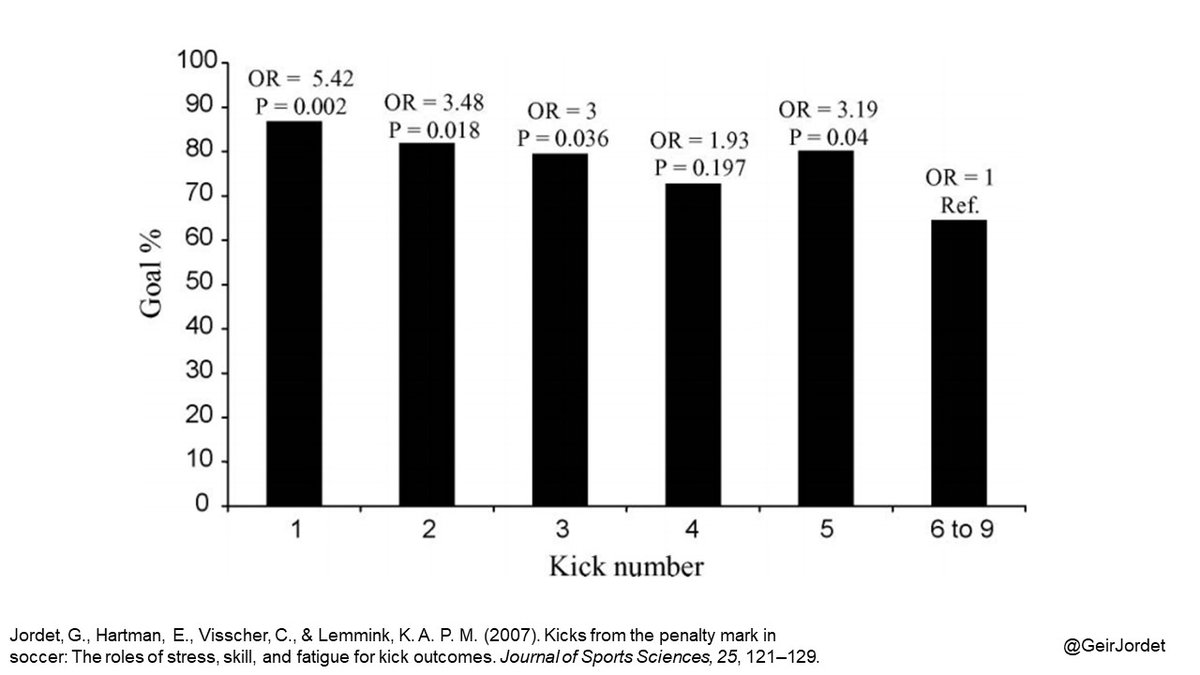
"Superstars" can be a liability in a penalty shootout. AFTER receiving a prestigious individual award, players score 65% of their shots. PRIOR to receiving an award, they score 89%. Status adds pressure to an already high-pressure event! (4/13) tandfonline.com/doi/abs/10.108… 
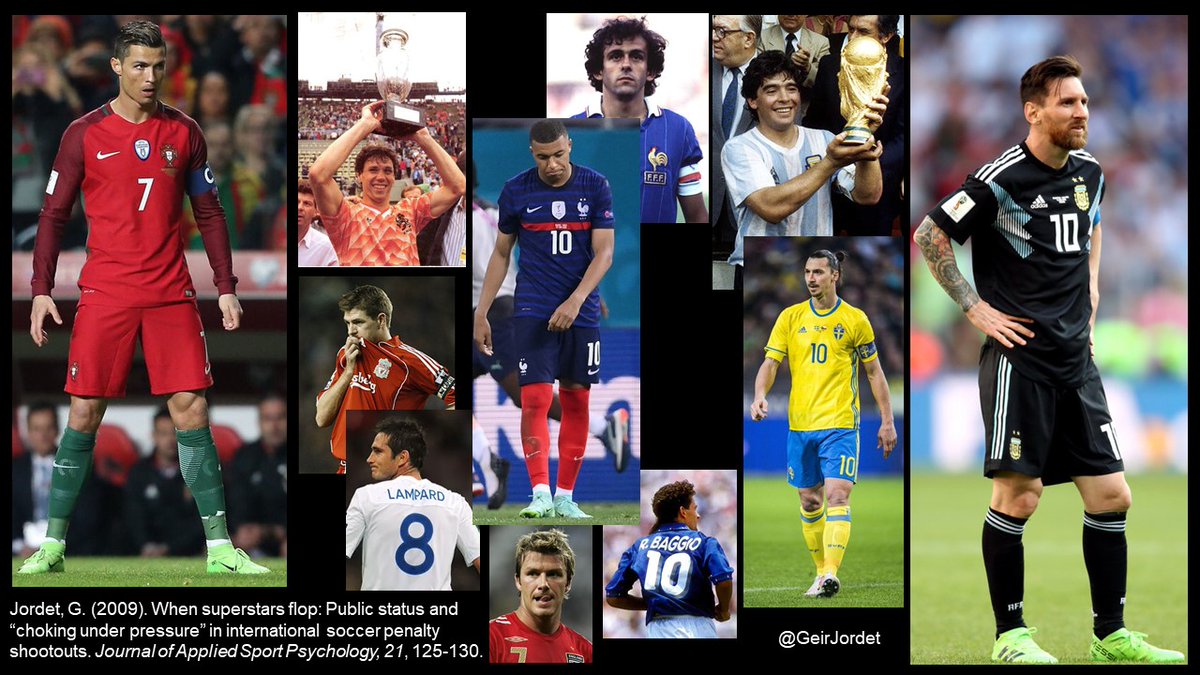
Positive mind helps! Players who need to score to not instantly lose score 62% of their shots, while 92% of shots where goals instantly give a win are scored. Players also prepare quicker and turn gaze away more on high-stress instantly-lose shots. (5/13) journals.humankinetics.com/view/journals/… 
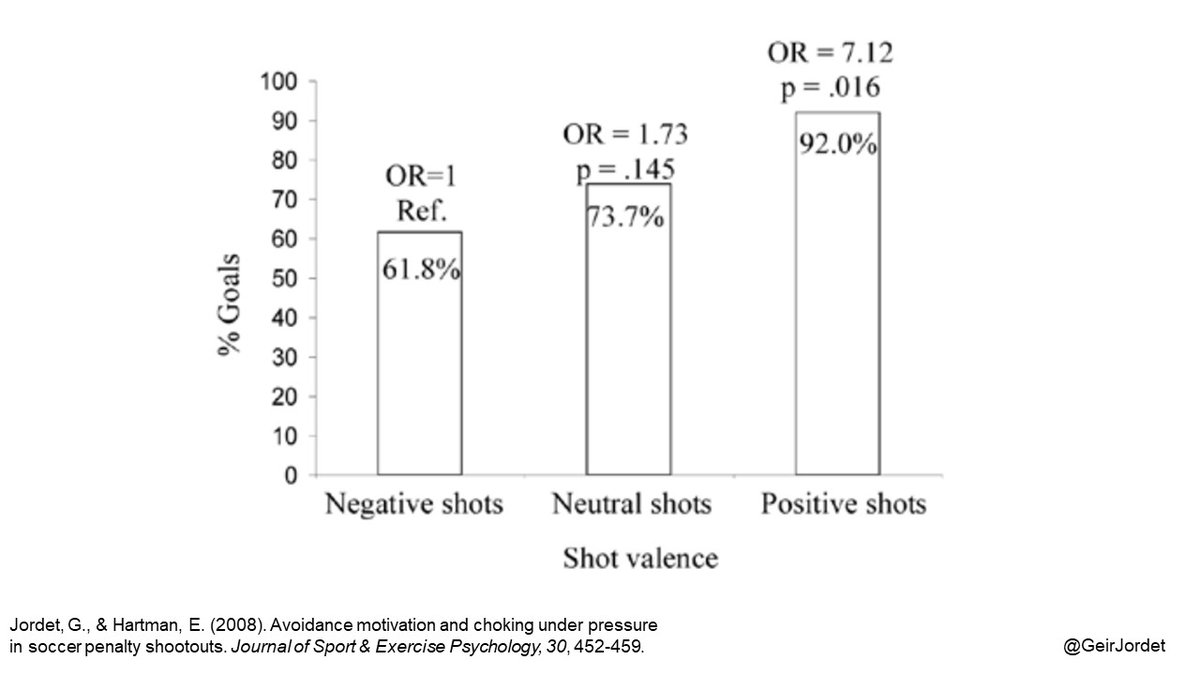
Players from different countries historically respond differently to the stress of penalties. English players, more than others, have turned their gaze away from the goalkeeper AND responded quicker to whistle. Probably to get relief from stress. (6/13) tandfonline.com/doi/abs/10.108… 

Ghosts from the past play a role for performance today. If your team lost in preceding shootout(s), you’re more likely to miss your current shot; if your team won, you’re more likely to score. Valid also if not personally involved in past events. (7/13) bpspsychub.onlinelibrary.wiley.com/doi/abs/10.111… 
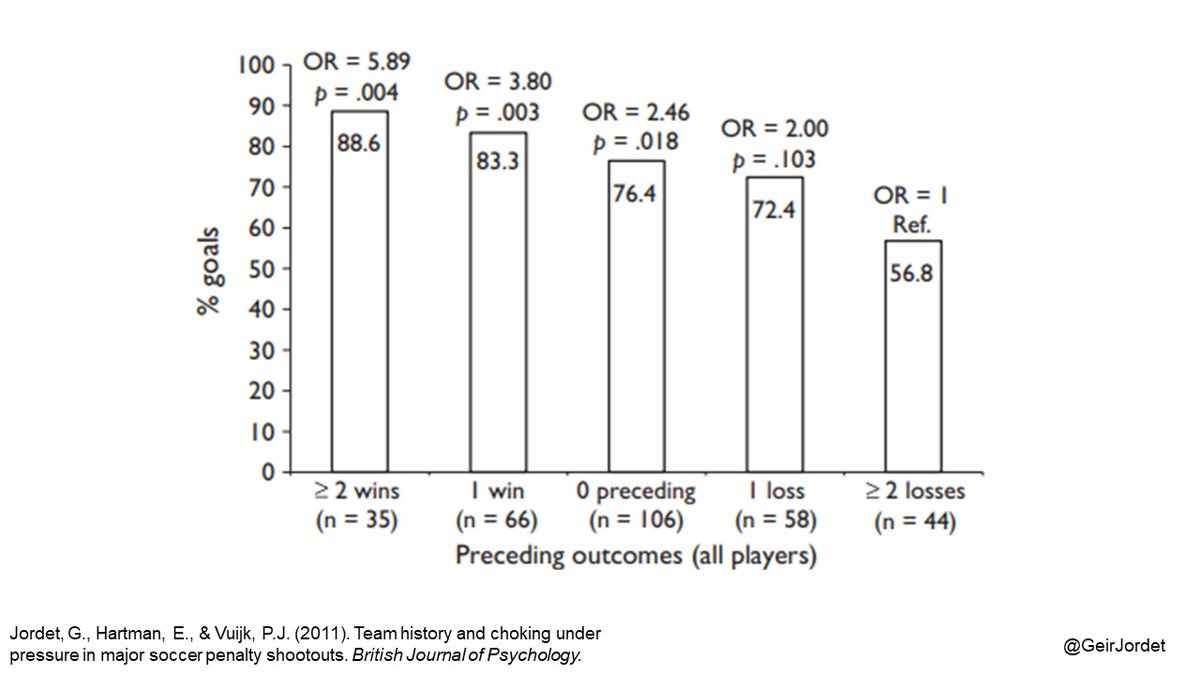
Quick preparation (ball placement/reaction to whistle) associated with fewer goals. Grounded and composed is smarter. However, short wait (for the referee's signal) is linked to more goals, suggesting goalkeepers are wise to delay the referee. (8/13) sciencedirect.com/science/articl… 
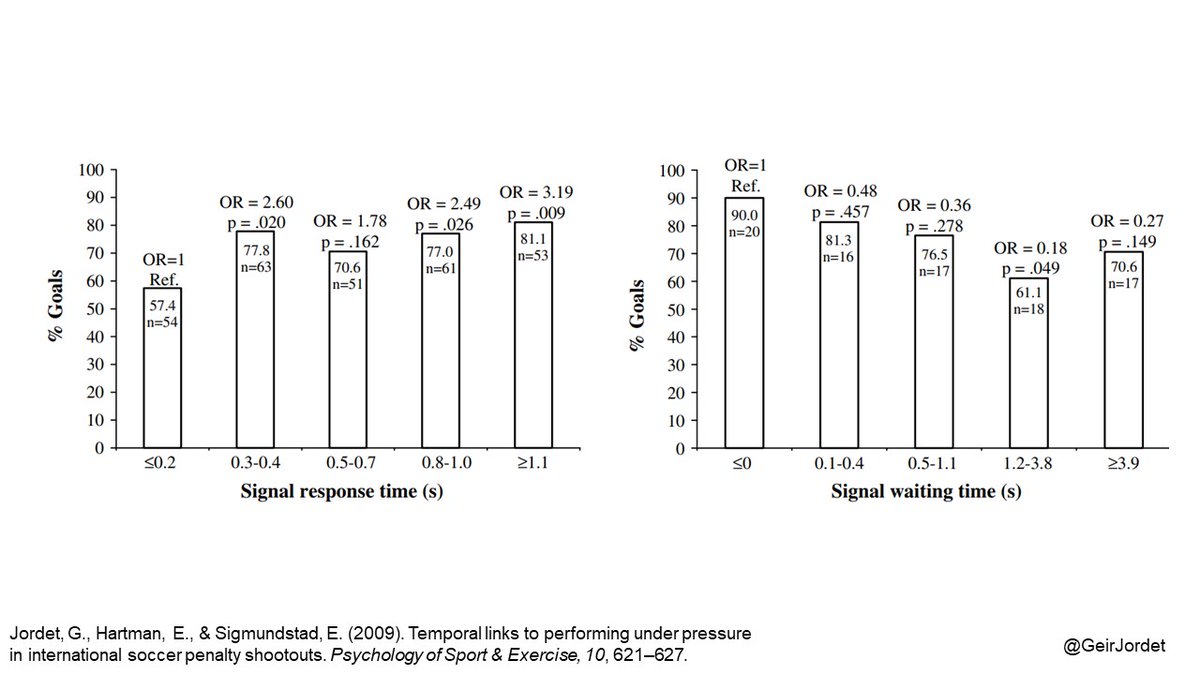
Interviews with 10 players who participated in a 2004 Euros penalty shootout showed they faced an intense explosion of different emotions - both helpful and harmful, positive and negative. The ONE emotion absolutely everyone experienced was ANXIETY. (9/13) researchgate.net/publication/35… 
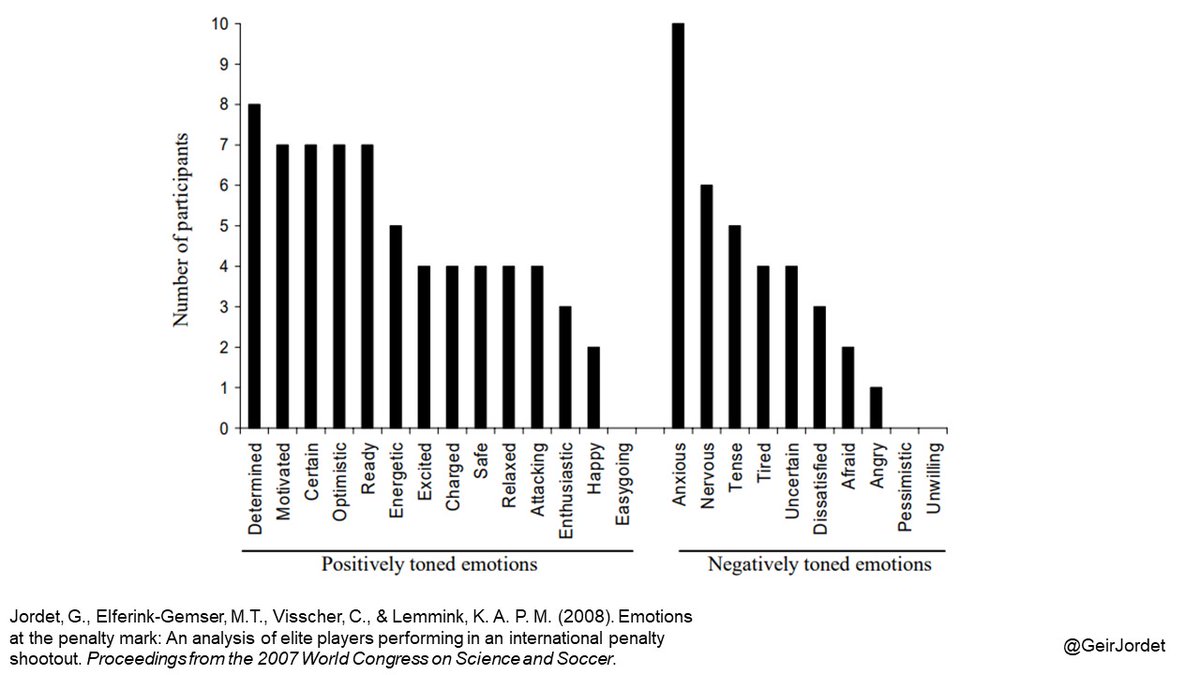
Taking a shot in a shootout is a dynamic and intense stress experience. Across time phases (after extra-time, mid circle, the walk, the shot), the most anxiety is experienced in the mid circle. From starting the walk, primary focus is on the shot. (10/13) psycnet.apa.org/record/2011-30… 
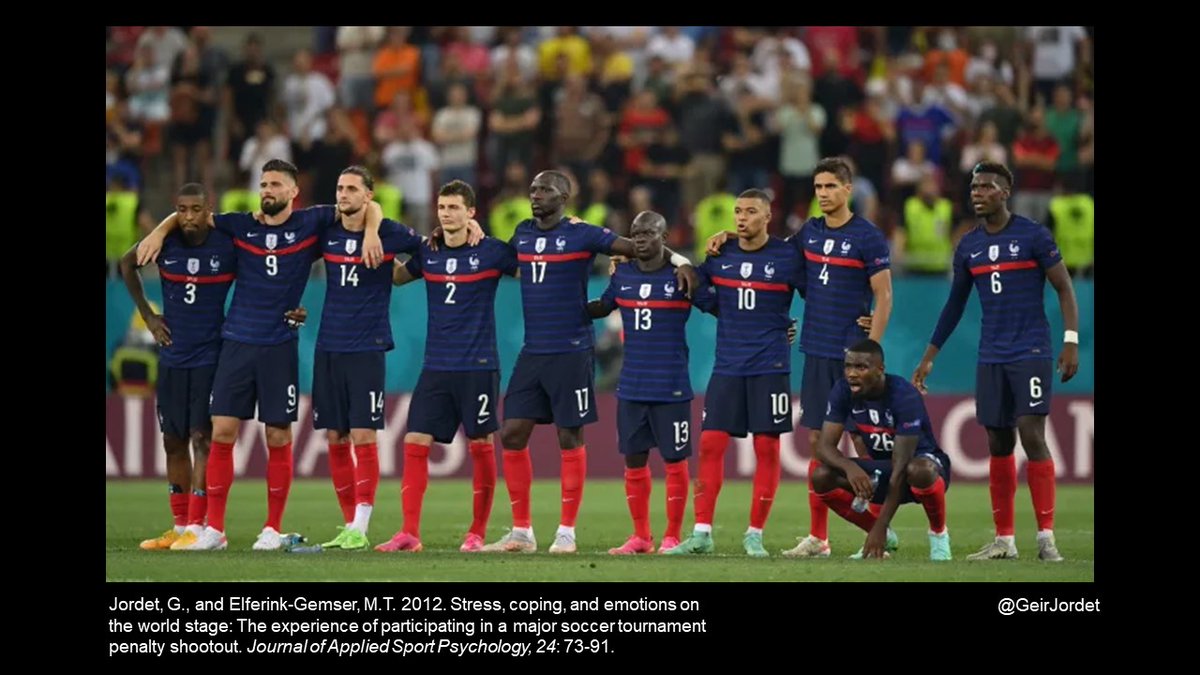
Many believe penalties is all about luck. True or not; we found that the more players believe the outcome of penalties are down to chance/lottery the more likely they are to experience destructive anxiety. Perception of control is key. (11/13) researchgate.net/publication/28… 
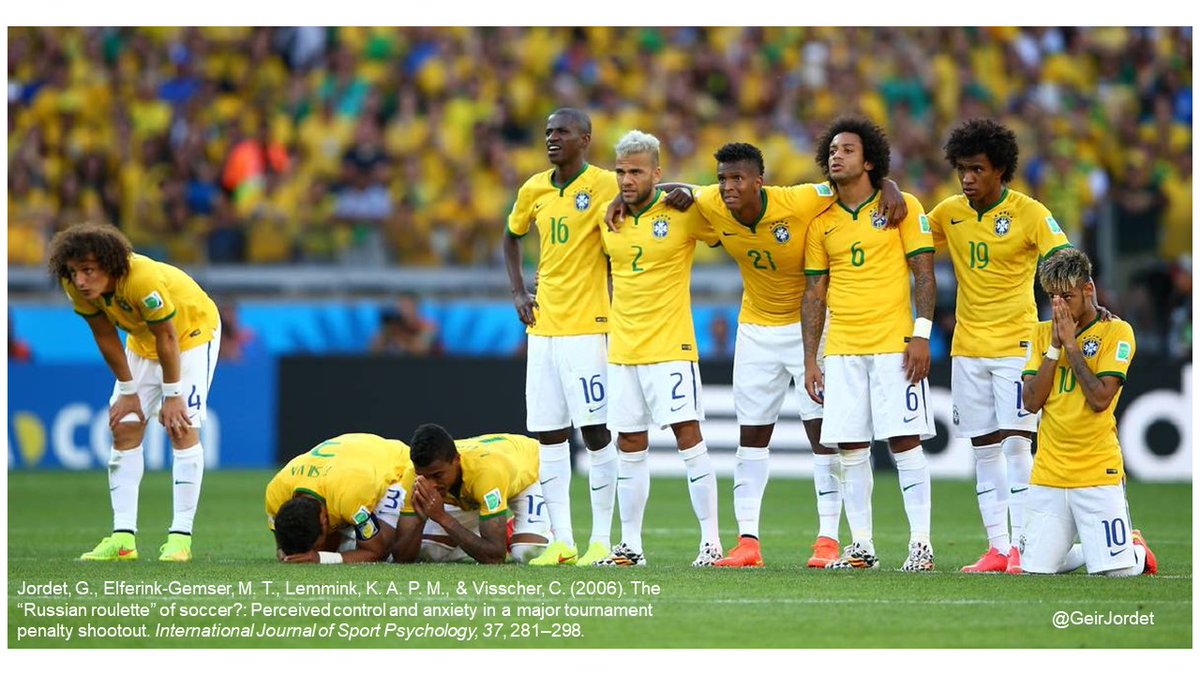
Each kick is an individual act, but the shootout is a team event. Players' communication (verbal/non-verbal) is critical for the outcome! Expansively or intensely celebrating an individual goal increases the chance of the team ultimately winning. (12/13) pubmed.ncbi.nlm.nih.gov/20544488/ 
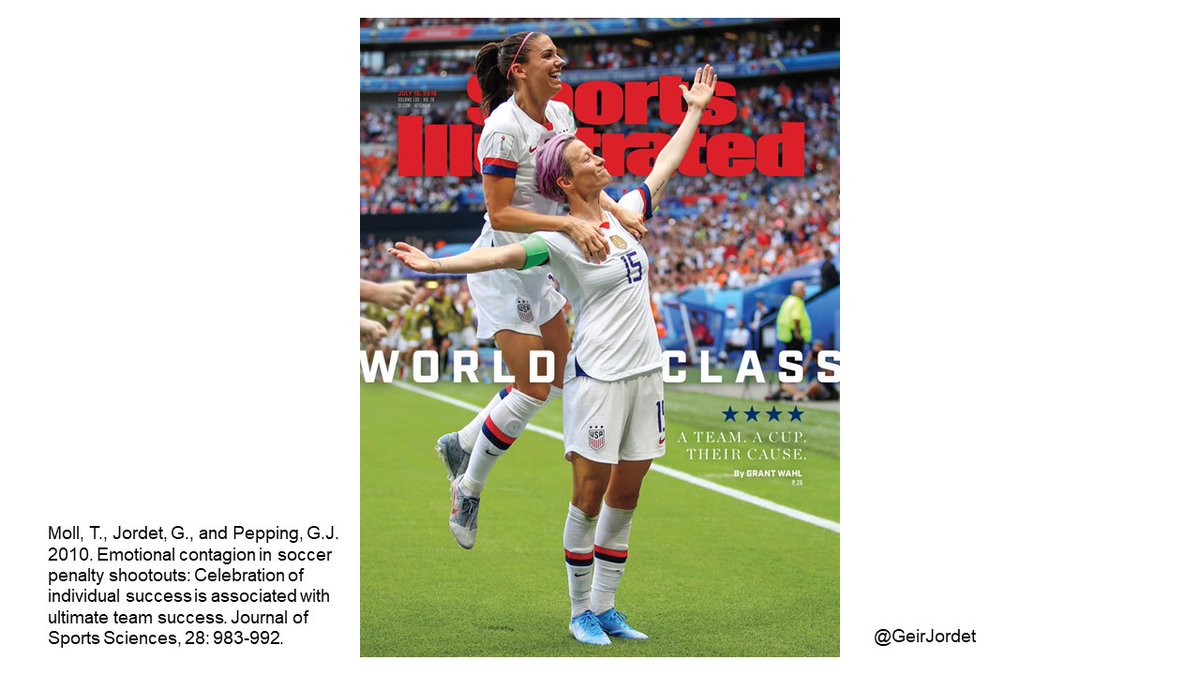
Knowledge about success factors is only the beginning to mastering the penalty shootout in practice. Smart teams approach this holistically, transfer the insights to concrete action, and practice with quality. The best teams in 2021 are committed, clever, and clandestine. (13/13) 
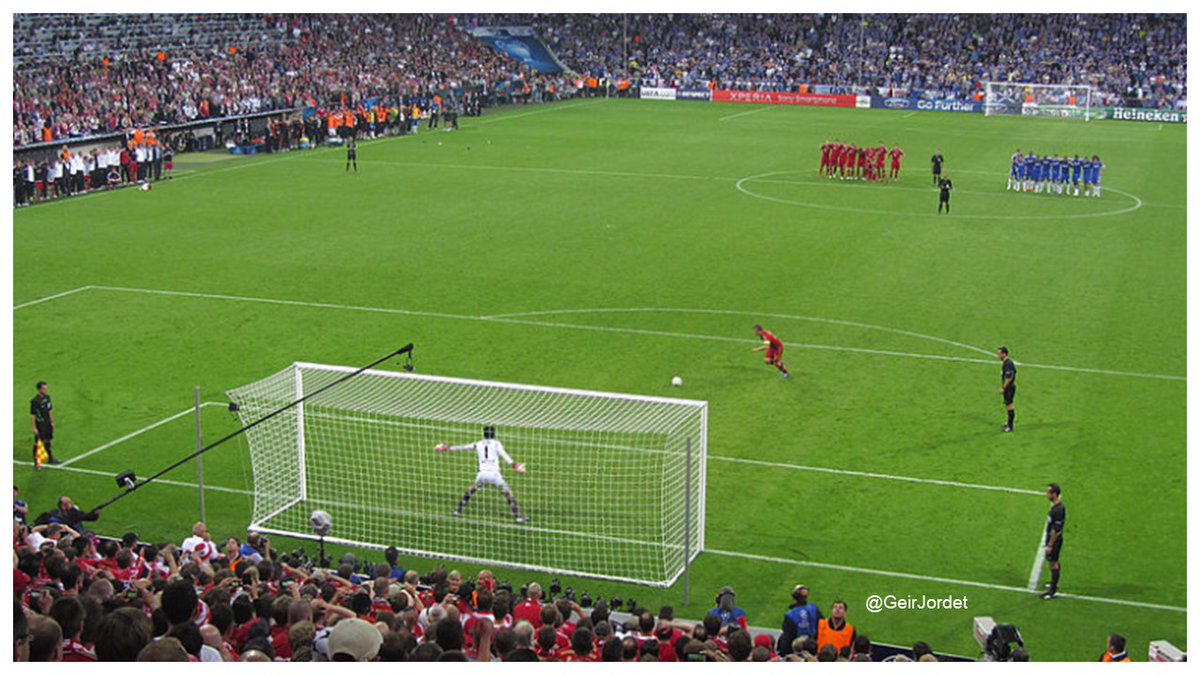
• • •
Missing some Tweet in this thread? You can try to
force a refresh


